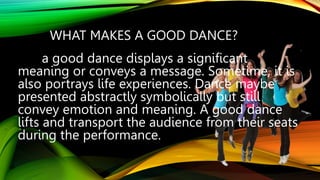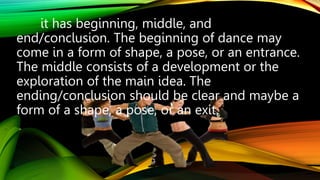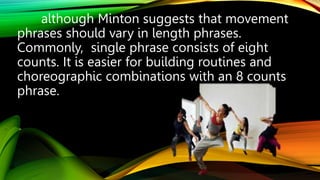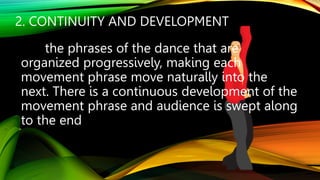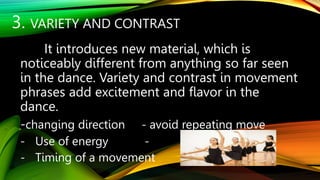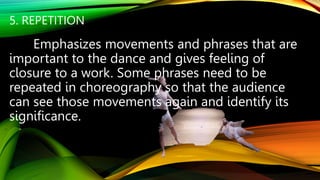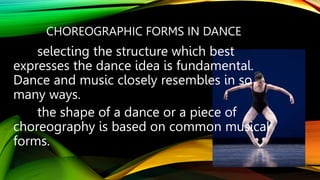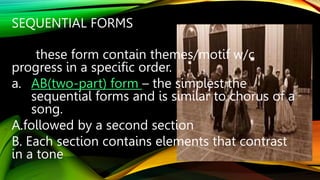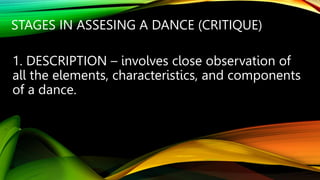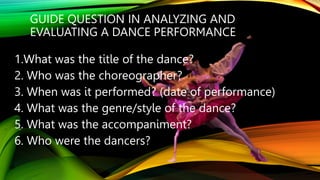This document discusses different types of dance including recreational dance, dance fitness, and good dance composition. Recreational dance involves social and folk dances from around the world. Dance fitness uses dance to increase cardiovascular endurance, strength, and flexibility. A good dance composition tells a story or conveys emotion through the use of elements like beginning, middle, end; form; phrases; unity; variety; and climax. It also discusses choreographic forms like sequential forms and ABA form.


